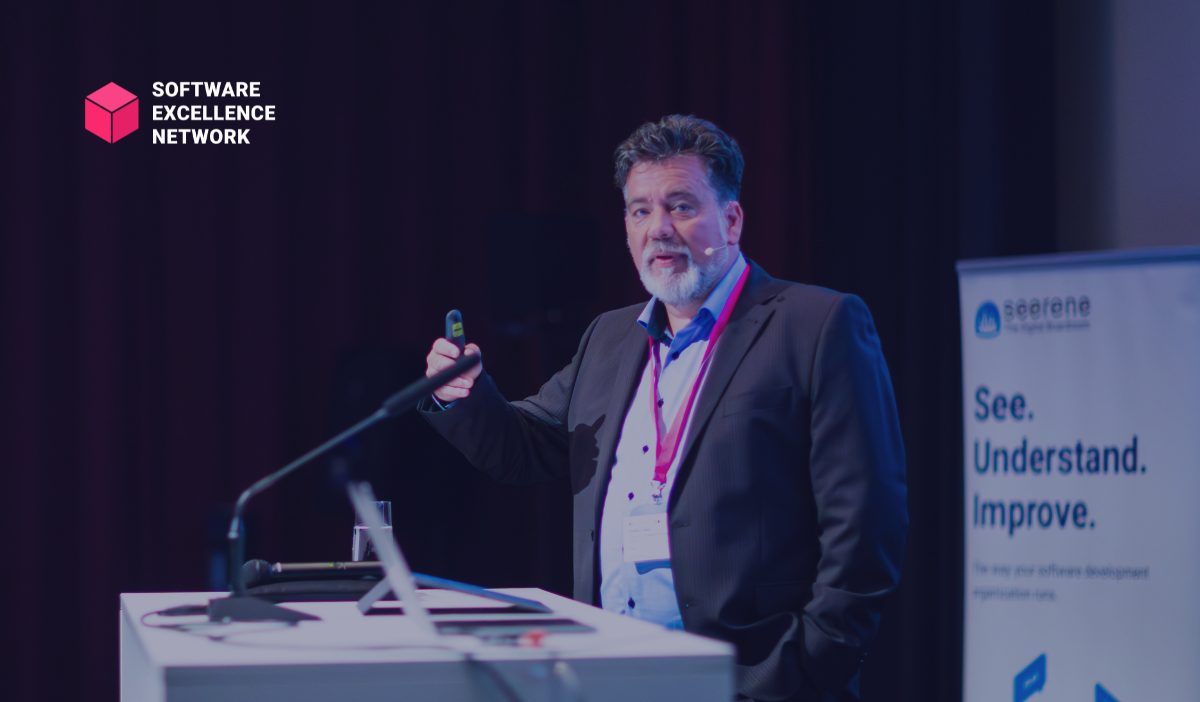
At Sharing the Roadmap, an exclusive gathering of top CIOs and CTOs in the automotive industry, Steffen Herz, Director of the Software House at HELLA/Forvia, delivered a masterclass that struck at the heart of a growing challenge in automotive innovation: the inefficiency of software integration and the urgent need for standardization across the industry.

Herz began his session with an honest reflection on automotive software’s evolution. While software innovation is driving transformation, its connection to real stuff – sensors, actuators, and hardware – complicates the development process. When we talk about innovation, it’s rarely about software alone. It’s about features that interface with the real world – light switches, microcontrollers, and critical systems that require real-time precision and functional safety.
This reality is a double-edged sword. While powerful new features elevate the driving experience, the complexity of software development, integration, and verification weighs down the industry, introducing delays, redundant effort, and escalating costs. Herz underscored this point with a stark statistic: up to 60% of the software engineering effort goes into integration and verification, not into building new, valuable features.
A recurring frustration lies in the endless adaptations required when transitioning software from one customer or platform to another. Herz described a common scenario: a feature that works perfectly in pre-development can suddenly require significant effort to adapt when customers request a different operating system, new microcontroller, or additional diagnostic features. This often leads to extensive reconfiguration, re-testing, and rebuilding, even though the core feature itself remains unchanged.
For Herz, this challenge extends beyond technical hurdles – it’s a management conundrum. “Why does this take so long?” he quoted his leadership team asking. “The feature is ready. Just bring it into the car.” But in reality, the boundaries around the software – frameworks, microcontrollers, safety demands – are in constant flux. Herz cited sobering figures: more than 25% of changes often target these “boundaries,” rather than the feature itself.
A particularly glaring example is microcontroller changes. Driven by supply chain disruptions, risk management, or customer demands, swapping one microcontroller for another can unleash a cascade of reconfigurations. “You’re not just changing a component,” Herz underscored that revising basic software, startup processes, security, and middleware requires immense effort and specialized expertise, especially when components like microcontrollers are changed.

Amid this fragmentation, Herz’s call to action was clear: the automotive industry must unite around a shared software framework. He emphasized the need for collaboration among Tier-1 suppliers, OEMs, microcontroller providers, and software vendors to create flexible yet stable solutions that can eliminate redundant effort.
Today’s piecemeal approach – incompatible tools, fragmented processes, and inconsistent standards – is holding the industry back. Herz pointed to other sectors where open-source collaboration and standardized formats have accelerated progress. In contrast, automotive software remains mired in inefficiencies. “We’re too slow,” Herz admitted. “And it’s costing us.”
Herz envisions a supply chain unified by a robust, adaptable standard: from microcontrollers to software vendors to final integrators. Such a framework would drastically reduce effort spent on integration and verification, freeing engineers to focus on innovation rather than endless reconfigurations.
While Herz acknowledged the complexity of achieving this vision, he remains optimistic. Tools like Seerene, which analyze and compare software evolution, are a step in the right direction. He also alluded to the promise of generative AI for automating specification comparisons – though, as of today, these solutions remain in their infancy.
We need to think bigger. The industry must work together, or we’ll continue to waste time and resources on problems that don’t add value for the end customer.
As the automotive sector accelerates toward software-defined vehicles, Herz’s message resonates louder than ever: collaboration and standardization are no longer optional – they’re essential for survival.
The Software Excellence Network is a collaborative community dedicated to solving the most pressing challenges in corporate software development. By fostering open dialogue and the exchange of ideas between top IT leaders and academic experts, the network empowers organizations to achieve excellence in software engineering. Through its masterclasses, executive exchanges, and thought leadership, the Software Excellence Network drives innovation, efficiency, and strategic progress in the software-driven world. This masterclass was part of the Sharing the Roadmap executive exchange, hosted by the Software Excellence Network.
A Note to Our Readers
This article provides a journalistic summary of the ideas shared by Steffen Herz during his presentation. While we’ve highlighted the key concepts and innovations he discussed, the full depth of his insights and examples can only be appreciated by watching the complete session. If you’re intrigued by these ideas and want to hear them explained directly by the speaker, we encourage you to watch the full video of his presentation. If you have any questions or concerns, please contact us.
These Stories on Events/Webinars
August-Bebel-Str. 26-53
14482 Potsdam, Germany
hello@seerene.com
+49 (0) 331 706 234 0
Generative AI Seerene GmbH
August-Bebel-Str. 26-53
14482 Potsdam, Germany
hello@seerene.com
+49 331 7062340